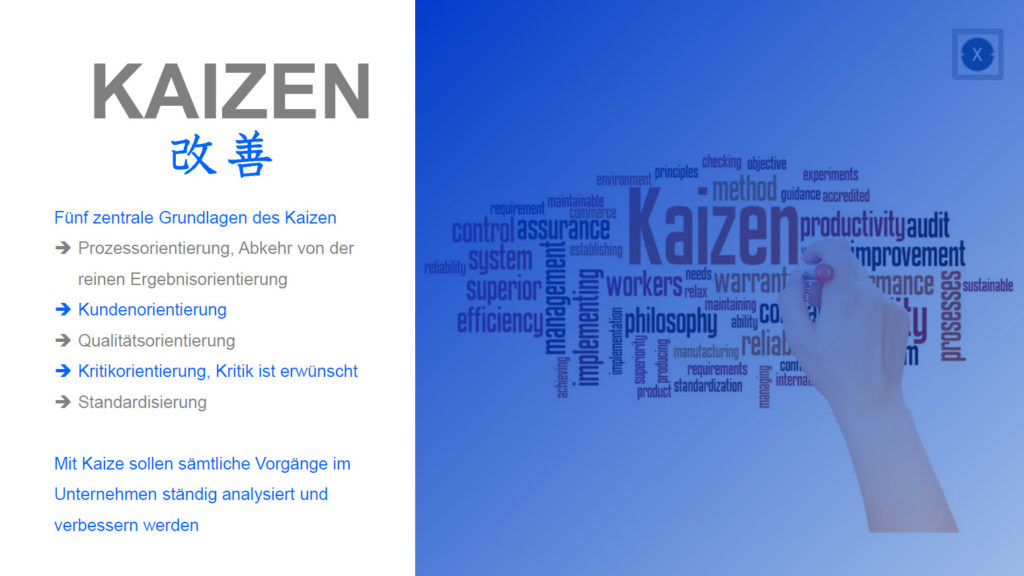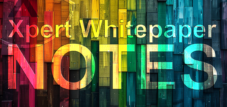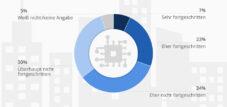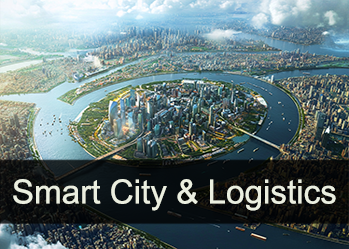Why authorities, municipalities and municipalities find it difficult: Administrative modernization and optimization for cities and rural areas | Kaizen
Language selection 📢
Published on: June 22, 2024 / update from: June 22, 2024 - Author: Konrad Wolfenstein

Why it's difficult for authorities, communities and municipalities: Administrative optimization and modernization for cities and rural areas - Image: Xpert.Digital
🛠️🔍 Under strict regulations and leeway: The challenges of public administration
🌱 Obstacles to modernization and potential for innovation
It is no secret that administrations operate in an area of tension between stability and pressure for change. On the one hand, their freedom is severely restricted by a number of legal framework conditions, such as civil service and collective bargaining law or municipal regulations. On the other hand, there are many areas in public administrations in which there is still considerable scope for design that could be used to work more effectively and efficiently. This is where the KAIZEN approach comes into play.
Suitable for:
📚 Strict regulations and dynamic challenges
Public administrations are subject to strict regulations, laws and bureaucratic processes. This is for transparency, accountability and to ensure fairness and equal treatment. This strict regulation can slow down modernization processes. Companies often have more flexibility and can react more quickly to market changes. They operate in a regulated but more dynamic environment that gives them more scope to innovate and adapt.
🔧 Continuous improvement and change in administrations
KAIZEN, a Japanese management concept, means continuous improvement. It is based on the philosophy that there are always ways to optimize processes and that improvements should be implemented in small steps. This way of thinking has proven particularly successful in the automotive industry, which has constantly developed its products through continuous, detailed improvements. A similar principle could also enable important progress in public administrations.
🔍📊 Challenges and opportunities in administrative modernization or administrative optimization
Public administrations are different from commercial companies because they are not exposed to the same market risks. You cannot simply go bankrupt or suddenly fall victim to disruptive developments. However, they are by no means immune to change. If digitalization progresses slowly, or if rigid structures make administrative work increasingly unattractive, this can have serious consequences. Administration could become increasingly outdated and eventually be replaced by modern, more flexible models. It is already conceivable today that new administrative structures will gradually emerge on “greenfield sites” that are more efficient and more adaptable – a kind of “administration 2.0”. At the same time, the traditional administration could slowly be dried up, similar to what was the case with the Federal Postal Service.
🔄 Continuous questions and changes in administration
A central argument for the use of KAIZEN in administrations is the need to constantly ask fundamental questions. These questions lead to questioning and continually improving existing assumptions and practices. One example is the approach to genuine collaboration across office boundaries, which has so far often failed due to rigid structures. Such collaboration requires new forms of leadership and greater citizen-centeredness that go beyond traditional one-line hierarchies.
🌐 Transformation through digital innovation and employee participation
In addition, the administration should see digitalization as an opportunity and actively promote it. E-government, which includes electronic administrative systems, offers the opportunity to speed up administrative processes and make them more transparent. Digital solutions can help improve access to administrative services and facilitate interaction between citizens and administration. They can also help collect citizen feedback more efficiently and integrate it into the continuous improvement process.
✨ Leadership culture and promotion of innovation in administration*
Administrative modernization also requires an adjustment of the management culture. Traditional hierarchy models may need to be replaced by more participatory leadership styles that shift more ownership and decision-making freedom to lower levels of the organization. Managers should act as moderators and supporters, giving employees the space to find and implement solutions independently. This strengthens the motivation and sense of responsibility of employees and can lead to more innovative and flexible working methods.
🎯 Potential and need for continuous improvement
Despite the narrow legal framework and seemingly unchangeable structures, administrative administrations have considerable potential for improvement and modernization. Given the advancing digitalization and the increasing expectations of citizens, it is essential to implement continuous improvement processes like KAIZEN. These processes make it possible to systematically question and gradually optimize existing structures and processes. They promote a culture of continuous improvement and can help make government more innovative, effective and citizen-friendly.
📣 Similar topics
- 📣 The challenge of administrative modernization
- 🚀 KAIZEN: A path to continuous improvement
- 🔄 Public administrations and the pressure for transformation
- 💡 Thought excerpts on the introduction of new administrative structures
- 💻 Digitalization and e-government as an opportunity
- 👥 Employee participation in the change process
- ⚖️ Regulations and their impact on modernization
- 🌍 Citizen-centeredness and modern administrative models
- 📈 Increased efficiency through continuous improvement
- 📚 Leadership culture and new leadership styles in administration
#️⃣ Hashtags: #administrative modernization #KAIZEN #digitalization #e-government #increasing efficiency
🔍📈 Administrative modernization: 10 steps to more efficient and transparent public administration
🚀 Modernizing public administration is a crucial step towards a more efficient, transparent and citizen-friendly service. In a world in which digital technologies and the call for sustainability are becoming ever louder, authorities, municipalities and municipalities are faced with the challenge of fundamentally rethinking and optimizing their administrative processes. Here are the ten subject areas that are at the center of administrative modernization:
1. 📱 Digital citizen services
focus on studying and implementing advanced technologies and best practices. The aim is to reduce bureaucratic hurdles and thereby increase citizen satisfaction.
2. 💻 E-government platforms
play an essential role by enabling administrative procedures and applications to be completed online from the comfort of your own home, which significantly reduces administrative work.
3. 🌆 Smart City Concepts
bring innovations to urban infrastructure to make urban living spaces more efficient, technologically advanced and environmentally friendly.
Suitable for:
- Smart & Compact City for German cities: What we can learn from Japan & China in the area of urbanization & social dynamics
- Smart City: Connected Future - How technology makes our cities smarter - Metaverse and the digital twins
4. 🔒 Data protection and cybersecurity
are key components of digitalization that ensure the protection of personal data and the security of information systems.
5. 🖥️ Modernization of IT infrastructure
includes updating existing systems to modern, flexible and secure solutions that meet the needs of digital administration.
6. ⚙️ Internal process optimization
is aimed at analyzing work processes within the administration and making them more efficient in order to reduce bureaucracy and conserve resources.
7. 💬 Citizen-friendly communication
aims to improve the communication channels between the administration and citizens through modern means of communication such as social media, chatbots and mobile apps.
8. 🤝 Inter-municipal cooperation
opens up opportunities to pool resources and reduce costs by allowing cities and municipalities to work together in various areas.
9. 📚 Employee training and change management
are essential to prepare staff for new challenges and technologies and to promote acceptance of changes.
10. 🌍 Sustainability and environmental awareness
takes ecological aspects into account in administration by implementing measures such as the paperless office, digital file management and the use of environmentally friendly technologies.
🤝 Citizens in focus
Administrative modernization is a complex but essential process aimed at strengthening the relationship between citizens and the state, using resources more efficiently and ensuring a sustainable future. By addressing these ten topic areas, authorities can set the course for future-oriented administration.
📣 Similar topics
- 📱 Digital future: How citizen services are revolutionizing administration
- 💻 E-government redefinition: The platform for tomorrow
- 🌆 Smart Cities: The transformation of urban living spaces
- 🔒 Security in focus: data protection and cybersecurity in administration
- 🖥️ Technology trend reversal: IT infrastructures rethought
- ⚙️ Increased efficiency: On the way to optimized administration
- 💬 Communication 2.0: Bringing administration and citizens closer together
- 🤝 Strong together: The power of intermunicipal cooperation
- 📚 Sustainable workforce: Education as the basis for change
- 🌍 Green administration: set environmental awareness as a standard
#️⃣ Hashtags: #DigitalFuture #E-Government #SmartCities #Data ProtectionCybersecurity #Administrative Modernization
We are there for you - advice - planning - implementation - project management
☑️ Industry expert, here with his own Xpert.Digital industry hub with over 2,500 specialist articles
I would be happy to serve as your personal advisor.
You can contact me by filling out the contact form below or simply call me on +49 89 89 674 804 (Munich) .
I'm looking forward to our joint project.
Xpert.Digital - Konrad Wolfenstein
Xpert.Digital is a hub for industry with a focus on digitalization, mechanical engineering, logistics/intralogistics and photovoltaics.
With our 360° business development solution, we support well-known companies from new business to after sales.
Market intelligence, smarketing, marketing automation, content development, PR, mail campaigns, personalized social media and lead nurturing are part of our digital tools.
You can find out more at: www.xpert.digital - www.xpert.solar - www.xpert.plus


























